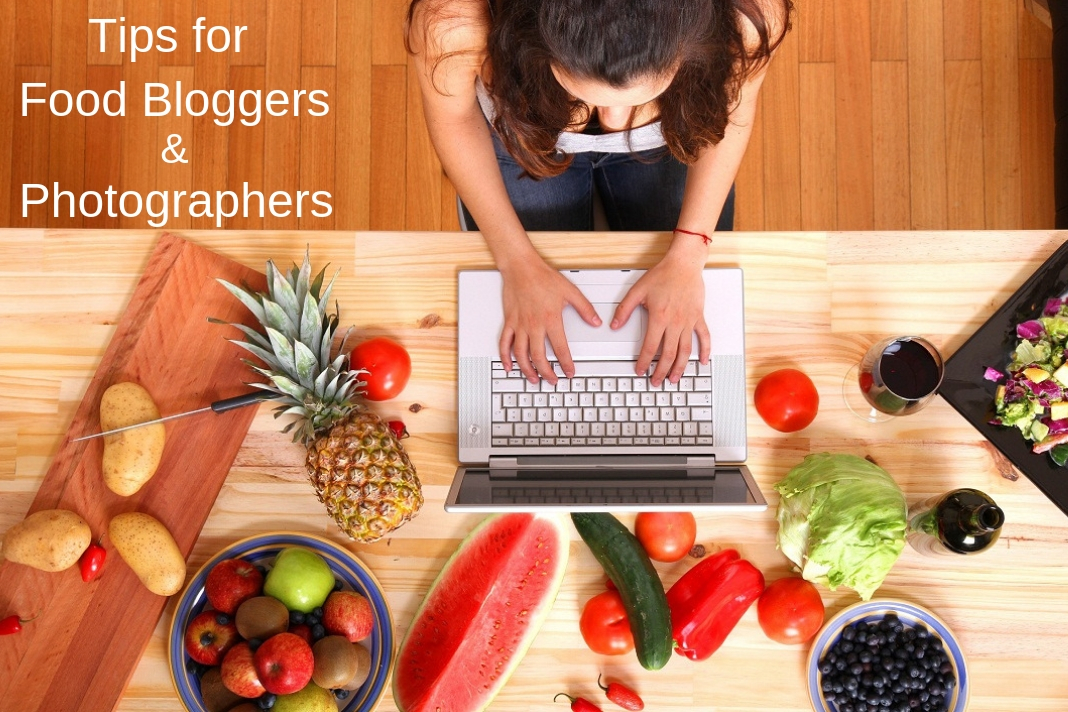
Food blogs and food posts seem all glamorous and glorious. But don’t judge the book by its cover. It seems easy to capture a food, write a story about it and post.
If this is what you believe it is, go to a crowded fish market and capture a pic, while people gawk at you and push you for space while you try to stand on your toes to get the finest angle of the fish’s eye. Not a pleasant sight? Yes, food blogging is as difficult as any other blogging career. It is hard work and sweat. It is greasy hands and hours of assembling ingredients.
But don’t get scared. If you are passionate enough, food blogging could be an enthralling experience for a lifetime. And, a profitable one that. We are here to make your journey a little easy. Although experience and practice will give you the best tips, we have compiled few common and not-so-common tips for food bloggers, especially for the novices out there.
15 Great Tips for Food Bloggers
1. You Need to Be Patient (And Determined)
A decade ago, food blogging was pursued passion and not for money. The opportunities were limited but space was wider and bigger. However, today the competition is aggressive and although the opportunities are more, the space to establish has become narrower.
Therefore, get ready for hard work and be patient enough to struggle for months. Achieving success is a mess, but it sure is luxury after that.
2. Research for Days, If Not for Weeks
Research subjects, such as self-hosted WordPress food sites, companies, types of food blogs, food photographs and photographers, camera, editing software, tips to shoot video, how to edit video, SEO, marketing practices, audiences, and social media practices. You don’t have to be an expert, but you really do have to do your ground works before you start.
3. Have a Goal
No goal is impossible to achieve. And, don’t start any work without targeting an aim. Only then you will be able to track your progress. Create a purpose for your blog, sketch its future. Create a plan, which embodies a blog name, design, type of blog, number of posts, photography style and so on. Make sure to include your marketing plan as well.
4. Know Your Marketing Pitch
What’s your blog about? You will hear this question quite frequently. Don’t have a robotic script ready when someone asks you this. Express your vision in a creative and quirky style. Add humor and charisma to your work.
5. Keep Your Website Clean and Easy
People should like your website and to make them like it, your website should be easy to navigate. Make your recipes or blog post searchable. No junk sidebars, no unnecessary banners, no too many colors, and fonts. Keep it simple, focused and categorized. Something similar to this.
6. Be Original
Don’t copy other food bloggers. You can copy the style but not the content. You can copy the words but not the thoughts. You get it? Post what you like, what you think is great and what you want to review.
7. Show Yourself Through Your Work
Be enthusiastic about what you do. It can be very infectious. One of the best aspects of blogging is only those people will like your post who share your undying interest and love for food. So, be 100 percent yourself when talking about food.
8. Spend Money (Only Then You Can Make It)
We know investments can be risky, but cutting corners may harm your blog site in earning revenues. Few areas where you really should consider investing include web-hosting, SEO, WordPress themes and plug-ins, good camera and editing software and a good laptop to support your incessant typing.
9. Write Down Whatever You Remember
Just don’t wait for your laptop MS Word Document screen to open to start writing your thoughts. Blogging is mostly about creativity, and creative thoughts and ideas can hit you anytime. Found something interesting? Or got a nice idea? Take your phone out and note everything on Google Docs.
10. Rewrite and Make it Glorious
Often times, you will write recipes adapted from other chefs and food bloggers. If you must, then rewrite the entire content in your own words and style. Reorganize the ingredients, add different measurements, and add more tips and footnotes. If you don’t, Google will penalize you and it will harm the original developer’s website too.
11. Credit Your Sources
It’s a great idea to bond with chefs and other food bloggers. Credit the original author or link to their profile. The same goes for photographs. If you take an image from another website, make sure you credit the website for the pic. Don’t crop the image or add effects either. Everything should be shared and linked legally.
12. Link Within Your Own Site
This is known as internal-linking. Internal links and anchor texts are ways to stick around. Link to relevant old posts to make sure your viewers browse and navigate within your domain.
13. Remember Your Readers
Make sure their reading experience is effortless and interruption free. For instance, we all know that Ads are one of the primary sources of income from traffic. And as a blogger, you must earn passive income through ad traffics. But that doesn’t mean you will go overboard and disturb your readers. Make your ads invasive; avoid autoplay sounds and videos. Popup ads can really be a nuisance for serious readers. Avoid them completely.
14. Let People See the Real You
Yes, we agree you are a food blogger. But don’t you think the readers would also like to know the blogger behind those awesome recipes, photos, and content. So, what can you do? Get out of your shyness and post a context relevant pic of yours somewhere within the content. Also, make sure that you interact with your viewers through questions and blog post comments.
15. Make it Easy and Simple
Make it easier for visitors to follow you, mail you and comment on your blog. So, don’t oblige visitors to open an account or ask them to log in for comments. Don’t ask for CAPCHAs either. You aren’t dealing with any kind of money here. So, don’t get into technical formalities.
Food Photography Tips
Photography is all about lights, camera, and action. Yes, all of that and more, such as background, colors and frame, and of course food.
16. Recreate your favorite. If you can think of anything, find a photograph on the internet, recreate the meal, set the stage and backdrop and shoot.
17. Pay attention to other photographs. Check out the details, have a close look at the food styling, the light, angle when the photo was taken. The more you explore the greater photographer you become.
18. Don’t feel confined to taking photos in your comfort zone, say kitchen. If you have to move around holding a piece of bread to get the right light exposure, do it. If you have to climb a wagon to shoot the road-corner Chinese kiosk for your food festival blog and then do it. Do not hesitate as a photographer.
19. Never use flash on your camera when shooting food photographs. Use natural light as much as possible. Or else make sure you shoot during the day, next to a window. When shooting with a smartphone, use HDR mode only.
20. Take photos from as many angles as you can define. And click a dozen shots. Pizzas look better from above, burgers from the side, drinks at 45 degrees. Some dishes look great away from the light while some don’t. Move your plate and take pics from all possible angles to get the right capture. You can save a few and delete the rest.
21. Minimize clutter from the background. Keep things simplistic and clean. If a napkin doesn’t add to the photo, remove it. If the knife is distracting the mood, then remove it. Create a mood with your camera and props. Focus on the main dish or plate or food. However, don’t zoom in to close.
22. Use white balance edit to bring the neutral colors in your picture. Colors look perfect when the white balance is set accurately. Shoot in Raw format to adjust white balance effectively. If your plate looks yellow, pink, blue or green, the issue is the white balance.
23. Use Reflectors and Diffusers to bounce light back onto the plate and reduce shadows. You can use them to bring in more shades. White fabrics over the window also work perfectly well to soften the light. Don’t invest in these hugely. Buy cheap ones such as thermocol sheets or foam boards to fulfill your purpose.
24. Pick the freshest ingredients and freshly cooked and served food. Even the tiniest of wrinkles and water smudges all over your plate can dampen the spirit of the picture entirely.
25. Use simple props to enhance your pics. You can also use raw ingredients as props. Make sure when plating dishes, use odd numbers, such as three bowls, three strawberries etc. For more food photography tricks and tips click here.
If you have any questions or have a great food blogging and photography tip, do share with us in comments. Stay in touch through our posts.




